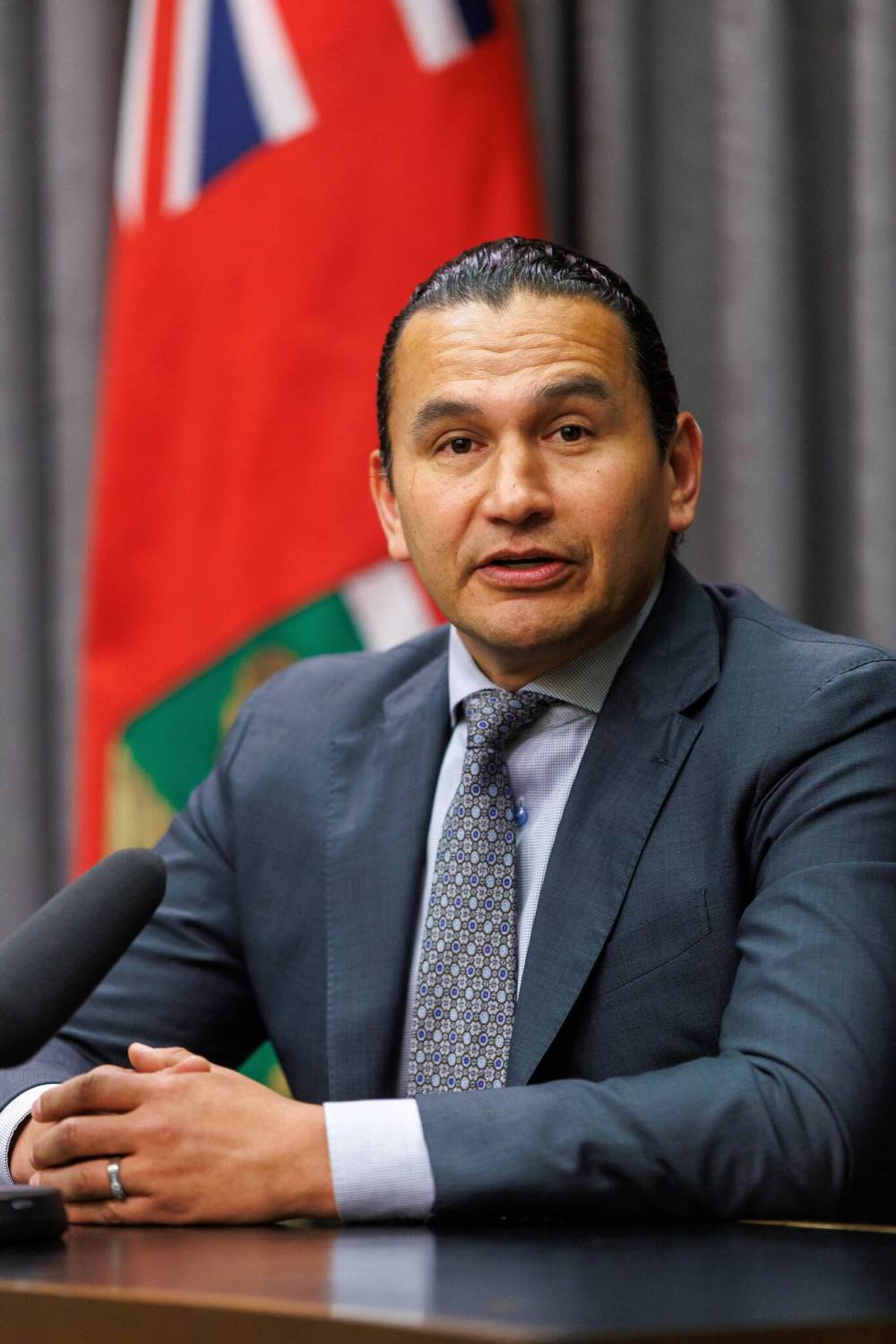The Kinew government wants to bring in a new energy plan to save Manitobans money and generate more electricity for export by building wind farms and upgrading Manitoba Hydro generating stations.
Premier Wab Kinew said he hopes the plan, which he expects to have finalized by September so the public can weigh in on it, will serve as a road map for Manitoba Hydro and Efficiency Manitoba for decades.
“For me, it all starts with affordability,” said Kinew on Thursday.

MIKE DEAL / FREE PRESS FILES
Premier Wab Kinew hopes his government’s new energy plan will serve as a road map for Manitoba Hydro and Efficiency Manitoba for decades.
“The climate and economic development are all important issues, but, in my view, Manitobans are going to do the climate-friendly thing when it is affordable for them. So, we have to keep electricity rates low and we gotta make sure there is the right sort of positive incentives in place so that Manitobans can electrify home heating and transportation.”
Kinew said both the government and Manitoba Hydro know they need to increase the amount of power generated in this province.
“The previous government, they didn’t add a single megawatt of power during their time in office,” he said. “They neglected the maintenance requirements by Manitoba Hydro.
“We have to add generation capacity because the province is growing. We want to do economic development projects, so if we’re looking for that next generation of power generation in Manitoba, wind really kind of jumps out as an interesting opportunity.”
Kinew said there must be a backup since the wind doesn’t always co-operate. For the first time in decades, that doesn’t mean building a new generating station.
“We need to firm up wind power (and) we need to do maintenance on older facilities,” he said. “We can do two things at once if, when we go to retrofit an old dam, we don’t just install the same old turbine, we install one with more capacity.
“Our team is pretty excited about this energy plan… I think it will have a nice mix of meeting our future needs, taking care of the existing infrastructure and delivering that all in an affordable way for the average person.”
Byron Williams, a lawyer with Legal Aid Manitoba’s Public Interest Law Centre, said the province never had an energy strategy until the Tory government put one in place shortly before being voted out last year.
“An energy strategy is important to protect the environment, eliminate the silos between Manitoba, Manitoba Hydro and Efficiency Manitoba, meet our future energy needs, and ensure that Manitoba consumers, both middle- and low-income, can access affordable energy,” said Williams, who represents the Consumer Coalition, which is made up of the Consumers Association, Aboriginal Council of Winnipeg and Harvest Manitoba, at electricity rate hearings held by the Public Utilities Board.
“Our clients regularly survey Manitobans and a key message was the need for affordability, which goes back to the point that Manitoba Hydro needs to be more efficient.”
Williams also said there must be a balance between how the utility modernizes its operations and protects the environment and the rights of First Nations and other Indigenous people.
“The energy strategy might just assume business as usual for hydro operations,” he said. “We are not sure it is safe to assume it can be business as usual because the licence for Lake Winnipeg and the Churchill River expires in 2026. Will these operations be able to continue as business as usual or have to change for environmental concerns and for treaty rights?
“We will be looking at the vision and the evidence they rely on.”
Meanwhile, precipitation in the past few weeks has boosted the fortunes of Manitoba Hydro which, as late as May, was worried its revenue stream for export energy sales was set to drop with the water levels.
Hydro spokesman Scott Powell said the amount of water flowing into Lake Winnipeg from various river systems was at the lowest in four decades on April 1, while the lake itself, which the utility is licensed to keep between 711 to 715 feet above sea level for electricity generation, was down to 711.8 feet.
Powell said since then, the lake has rebounded by two feet, to 713.8 feet on Thursday, not far below the 714.2 it was on the same day last year.
“Obviously, the rain isn’t hurting us,” he said.
kevin.rollason@freepress.mb.ca

Kevin Rollason
Reporter
Kevin Rollason is a general assignment reporter at the Free Press. He graduated from Western University with a Masters of Journalism in 1985 and worked at the Winnipeg Sun until 1988, when he joined the Free Press. He has served as the Free Press’s city hall and law courts reporter and has won several awards, including a National Newspaper Award. Read more about Kevin.
Every piece of reporting Kevin produces is reviewed by an editing team before it is posted online or published in print — part of the Free Press‘s tradition, since 1872, of producing reliable independent journalism. Read more about Free Press’s history and mandate, and learn how our newsroom operates.
Our newsroom depends on a growing audience of readers to power our journalism. If you are not a paid reader, please consider becoming a subscriber.
Our newsroom depends on its audience of readers to power our journalism. Thank you for your support.